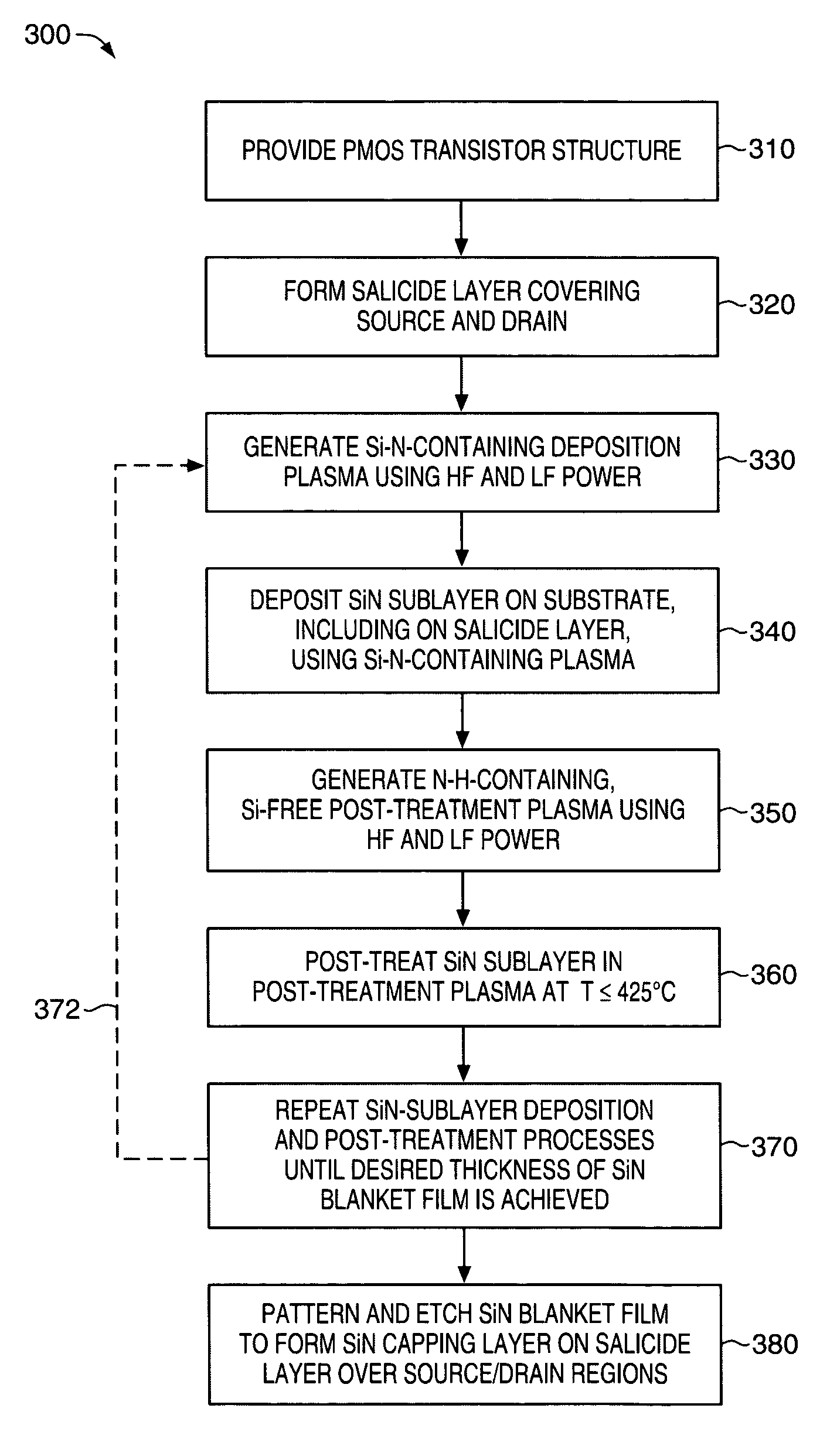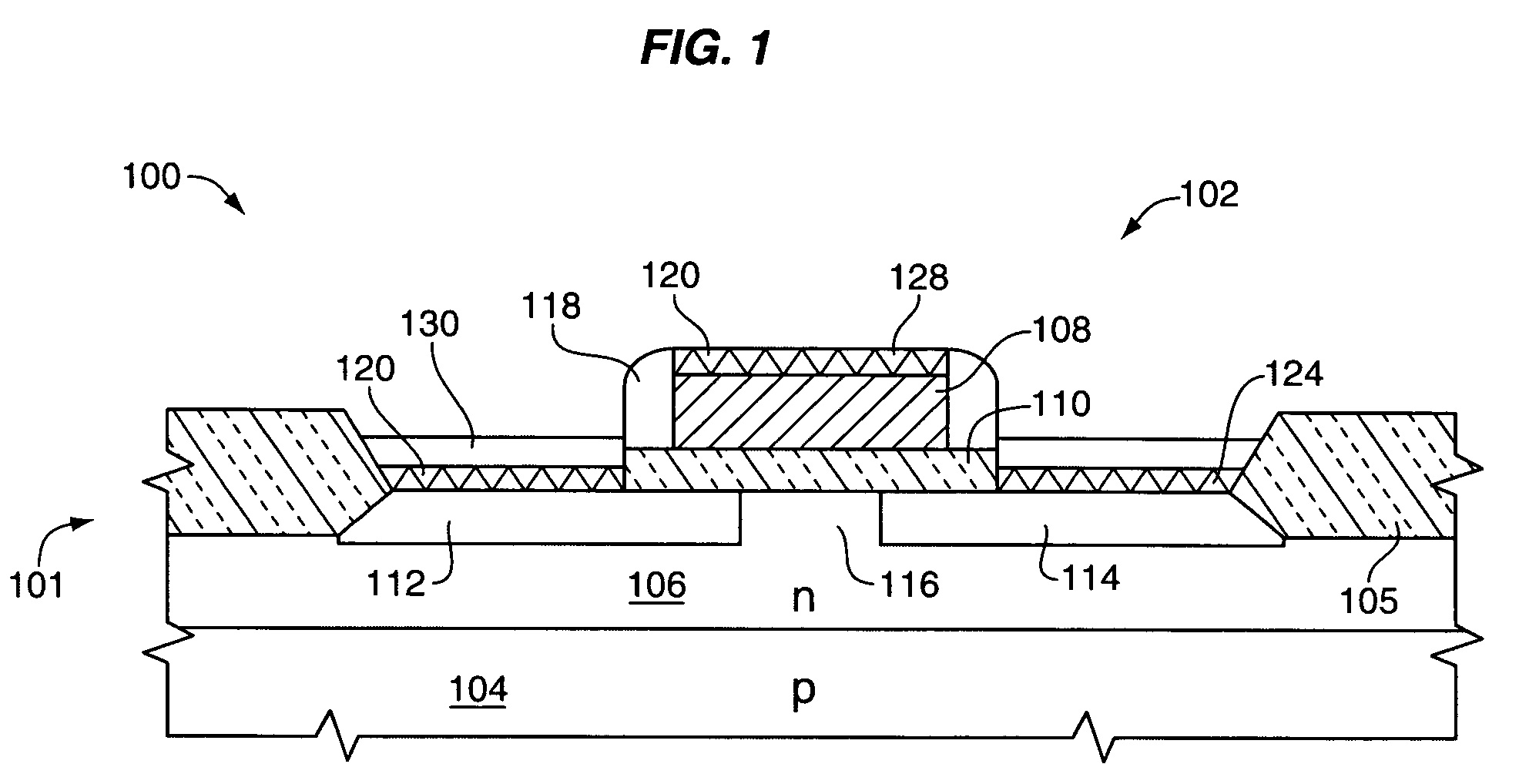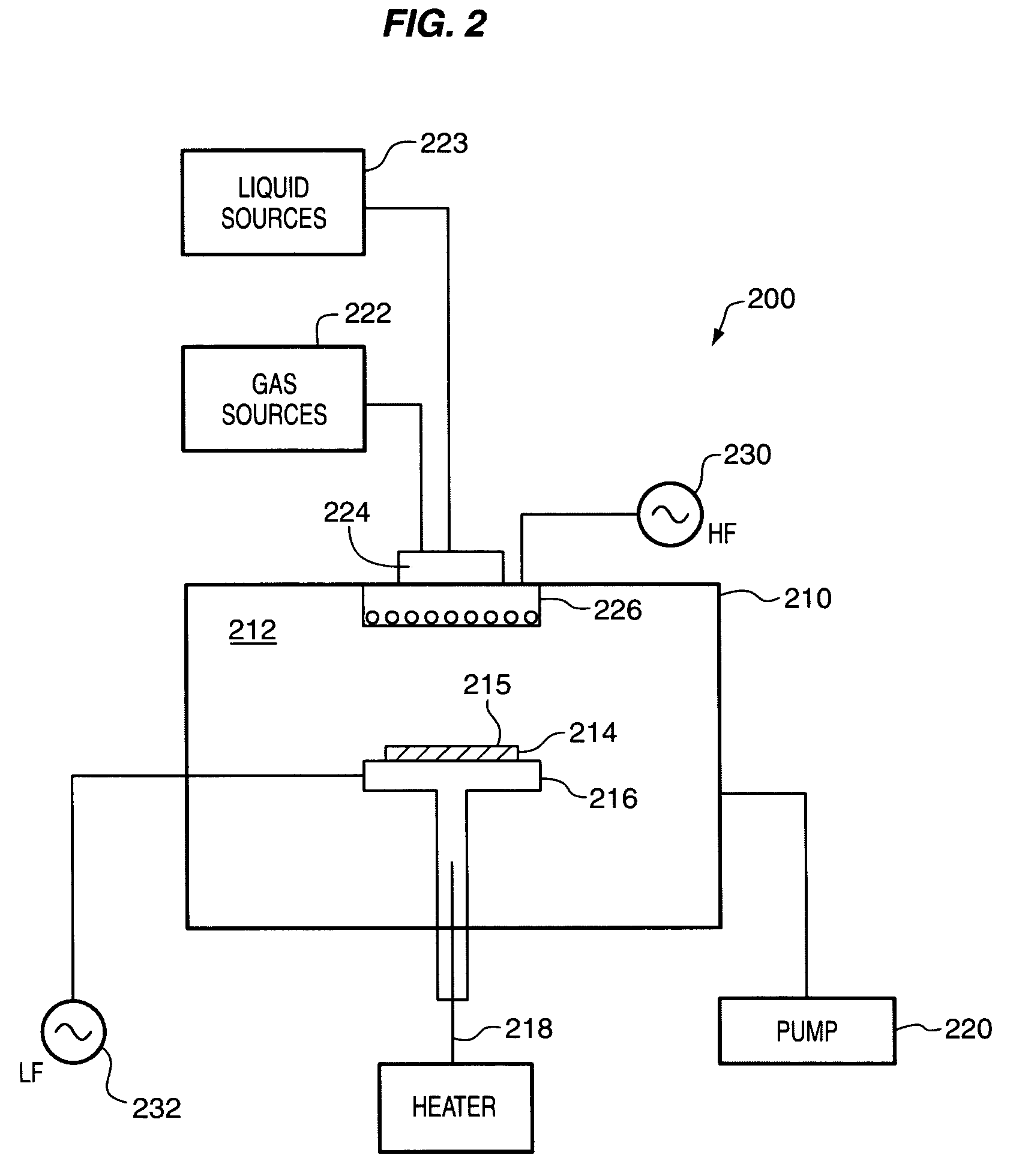PMOS transistor with compressive dielectric capping layer
a dielectric capping layer and transistor technology, applied in semiconductor devices, chemical vapor deposition coatings, coatings, etc., can solve the problem of film with relatively high compressive stress, and achieve the effect of enhancing the performance of the resulting transistor, preserving material quality, and ensuring the efficiency of the transistor fabrication process
- Summary
- Abstract
- Description
- Claims
- Application Information
AI Technical Summary
Benefits of technology
Problems solved by technology
Method used
Image
Examples
example 1
[0093]Silicon nitride (SiN) was deposited on the silicon substrate of a series of commercially-available 300 mm silicon semiconductor wafers. SiN was deposited on each wafer using a PECVD process in all four RF stations of a Novellus “Vector” apparatus. The deposition plasma conditions and the post-treatment plasma conditions were the same for all wafers, and are summarized here for the “Vector” apparatus as a whole. Flow rates and power values for each of the four RF stations correspond to one-fourth of the values listed below.
[0094]SiN Plasma Deposition Conditions:
[0095]
SiH4 flow: 600 sccmNH3 flow:1000 sccmN2 flow:35 liters / minHe gas flow: 6 liters / minHF-RF:300 W (13.6 MHz)LF RF:700 W (250 kHz)Pressure:2.1 TorrWafer temperature:400° C.
[0096]Post-Treatment Plasma Conditions:
[0097]
SiH4 flow:noneNH3 flow:1000 sccmN2 flow:35 liters / minHe gas flow: 6 liters / minHF-RF:300 W (13.6 MHz)LF RF:700 W (250 kHz)Pressure:2.1 TorrWafer temperature:400° C.
[0098]The distance between the showerhead ...
example 2
[0106]Silicon nitride (SiN) was deposited on the silicon substrate of a series of commercially-available 300 mm silicon semiconductor wafers. SiN was deposited on each wafer using a PECVD process in all four RF stations of a Novellus “Vector” apparatus. The deposition plasma conditions and the post-treatment plasma conditions were the same for all wafers, and are summarized here for each “Vector” RF station as a whole. Flow rates and power values for each of the four RF stations correspond to one-fourth of the values listed below.
[0107]SiN Plasma Deposition Conditions:
[0108]
SiH4 flow: 600 sccmNH3 flow:1000 sccmN2 flow:35 liters / minHF-RF:300 W (13.6 MHz)LF RF:700 W (250 kHz)Pressure:2.1 TorrWafer temperature:400° C.
[0109]Post-Treatment Plasma Conditions:
[0110]
SH4 flow:noneNH3 flow:1000 sccmN2 flow:35 liters / minHF-RF:300 W (13.6 MHz)LF RF:700 W (250 kHz)Pressure:2.1 TorrWafer temperature:400° C.
[0111]The distance between the showerhead gas inlet and the substrate surface was about 1.4...
PUM
| Property | Measurement | Unit |
|---|---|---|
| Time | aaaaa | aaaaa |
| Time | aaaaa | aaaaa |
| Thickness | aaaaa | aaaaa |
Abstract
Description
Claims
Application Information
 Login to View More
Login to View More - R&D
- Intellectual Property
- Life Sciences
- Materials
- Tech Scout
- Unparalleled Data Quality
- Higher Quality Content
- 60% Fewer Hallucinations
Browse by: Latest US Patents, China's latest patents, Technical Efficacy Thesaurus, Application Domain, Technology Topic, Popular Technical Reports.
© 2025 PatSnap. All rights reserved.Legal|Privacy policy|Modern Slavery Act Transparency Statement|Sitemap|About US| Contact US: help@patsnap.com



